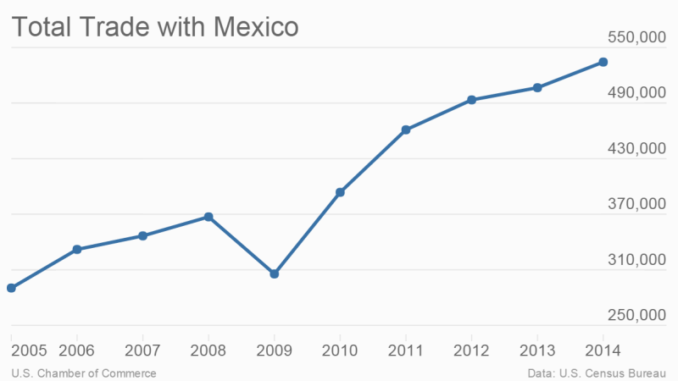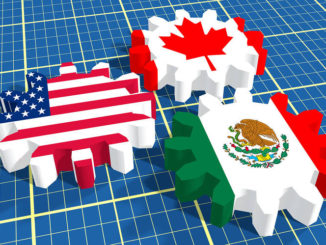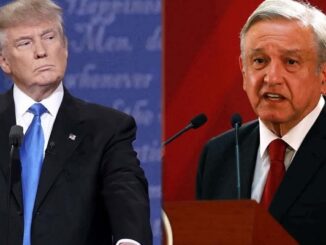
The U.S.-Mexico economic relationship is a success. In the last ten years, total trade (exports plus imports) of goods and services rose by 84%.
According to a 2010 U.S. Chamber report, the trade with our southern neighbor supports almost six million American jobs. Much of this is due to NAFTA.
Now, with Mexico’s growing middle class there’s more room for growth. How do we build on these successes?
At the U.S.-Mexico CEO Dialogue, a private sector forum working to increase regional economic competitiveness, U.S. Chamber President and CEO Tom Donohue listed four steps for improving the U.S.-Mexico economic relationship.
1. Energy.
“We need to better match resources with capital. We need to ensure that energy technologies, talent, and expertise can move freely around the region,” said Donohue. “But the most important thing we can do is lift the export ban on U.S. crude oil. It would be of great benefit to Mexico. And it would help lower global oil prices.”
2. Modernize Border Crossing.
Along with improving border security, border modernization will “enhance cross-border operations, eliminate wait times, and increase efficiency” for travelers and businesses moving goods.
3. Finish the Trans-Pacific Partnership.
Many pixels have been spilled here about the Trans-Pacific Partnership (TPP). But one thing to note is since both the U.S. and Mexico are part of TPP negotiations, when the trade deal is concluded, both countries as an integrated economic region will be better able to compete in the fast-growing Asia Pacific.
4. Labor Mobility.
“We’re pushing the government to liberalize NAFTA visa policies for highly skilled workers to facilitate the movement of engineers, scientists, and tech workers throughout the Americas,” Donohue said.
If policymakers can get these four components right, U.S.-Mexico commerce will continue to grow.



